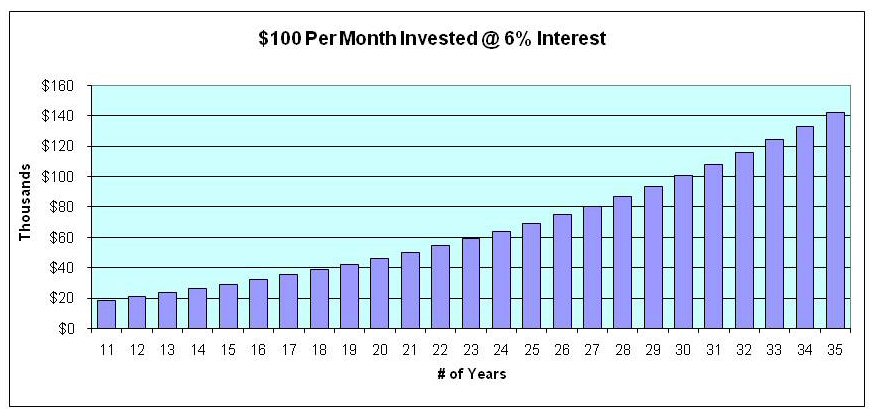Your lifestyle for what could be the best part of your life largely depends upon pre-retirement savings.
Maintaining Standard of Living in Retirement
An obvious retirement planning question is "How much should I save for retirement?" The simple answer is "enough to maintain your pre-retirement standard of living." This requires you to quantify your current standard of living expenses and to project these into retirement.
An August 2014 report from Newsmax.com quotes The Center for Retirement Research at Boston College which says that currently 53% of households will not be able to maintain their standard of living in retirement. According to the article this is due to four factors:
- Less than half (48.8%) of all private sector employees worked for an employer sponsoring a retirement plan,
- With wages stagnating in recent years, many workers have been unable to save for retirement,
- Home equity is no longer a reliable source of savings for retirement, due to a reduction in home ownership and the drop in home values, and
- Social Security benefits will have declined 25% by 2030 as the full retirement age rises and Medicare premiums continue to increase.
These factors are still applicable today except for home values, which are significantly increasing. However, use of home equity for a reverse mortgage or loan is not necessarily a good option. Reverse mortgage concerns are reviewed in the "Income" section of this website. Home equity loans result in monthly payments and less disposable income. Finally, recent inflation increases have impacted the ability to save and reduced the value of retirement savings and investments.
This information demonstrates the importance of starting to save early and regularly, maximizing the years in which you work, knowing how much you'll need in retirement (according to your retirement budget), knowing what you have (your net worth), and making the informed decisions regarding your savings and investments.
Early Planning
Your ability to retire at a desired age with a comfortable lifestyle is primarily dependent upon measures taken during wage-earning years. The earlier that retirement planning and savings begin the more likely that you’ll be ready at retirement time. For example, a hundred dollars invested per month at age 35 will yield over $100,000 at age 65 (assuming 6% annual interest), whereas waiting until age 45 to start this investment will yield less than half the amount ($46,200).

Tax Deferred Accounts
One of the best ways to save for retirement is through tax-deferred savings accounts. These include Individual Retirement Accounts (IRAs), employer-sponsored retirement plans [401(k), 403(b) and Section 457], and small business retirement plans (Keogh, SEP and SIMPLE).
Contributions (money added) to employer retirement plans and some IRAs can be made with pre-tax dollars (i.e., income you don’t have to pay tax on). Taxes on both the contributions and investment returns are deferred until you start making withdrawals (after age 59 ½ without penalty). If your employer doesn’t offer a retirement plan, or if you are maxed out on allowable pre-tax contributions to a 401(k) or IRA, you can still contribute after-tax dollars to 1) traditional IRAs (up to the allowed maximum), 2) Roth IRAs (if your income is not too high), 3) Variable Annuities, and 4) U.S. Treasury Securities. These instruments also allow your retirement investments to grow tax-free while retaining the advantages of dividend reinvestment or interest compounding. You’ll then have to pay taxes, except for Roth accounts, on the total amount withdrawn in retirement. Due to the substantial fees associated with Variable Annuities and the relatively lower (although safer) return on U.S. Treasury Securities, these investments should be in addition to 401(k) and IRA investments.
When contributions are made in pre-tax dollars [e.g., 401(k) plans], taxable income is reduced by the amount invested, providing a tax savings and most likely increasing your ability to save more. For instance, if you are in the 22% marginal income tax bracket and you contribute $1,000 to a tax-deferred retirement plan you would lower your federal income taxes by $220 (0.22 times $1,000). The savings is based on your marginal tax rate, i.e., the rate you pay on the highest dollar of earnings.
Maximize Working Years

One of the simplest and best ways of helping to assure sufficient retirement income is to maximize your social security benefit by working for as many years as possible while earning the maximum social security income. Also, working for a company that has a defined pension benefit plan (if any still exist) or cash balance pension plan would be very helpful. These plans provide for pension annuity payments based on salary and number of years of company service. These retirement savings plans are described in the "Retirement Income" section of this website.
Net Worth
To get a perspective on whether your saving plan is working and properly positioning you for retirement, you should begin calculating and tracking your Net Worth. This is where you analyze your current financial situation by listing and summarizing all of your Assets and Liabilities. Your Assets are the value of everything that you own, and your Liabilities are all of your debts (i.e., all monies that you owe to others). Net Worth is Assets minus Liabilities. In a Net Worth calculation, assets typically include the actual or market value of your bank accounts, real estate and investments, and liabilities include all mortgage, installment loan, credit card and other debts.
Net Worth Calculation |
|
ASSETS
|
LIABILITIES
|
|
|
Click on the following link to obtain a sample form for use in calculating net worth: Sample Net Worth Form
After calculating your Net Worth, you should consider which assets are likely to grow prior to retirement, which liabilities could/will be retired (i.e., paid off) prior to retirement, and which assets can be converted into retirement income.